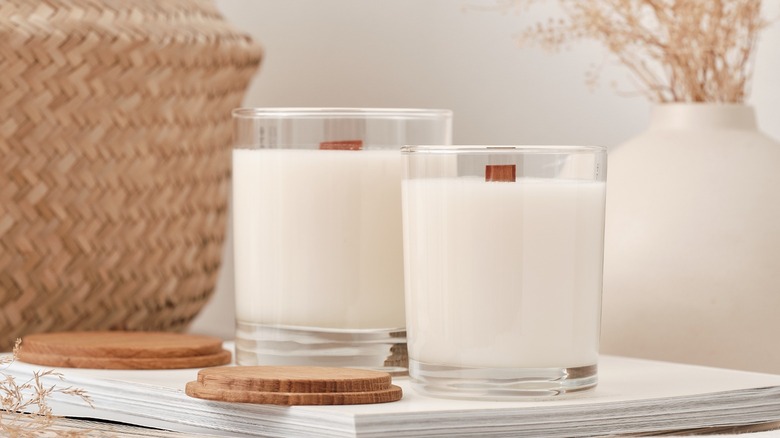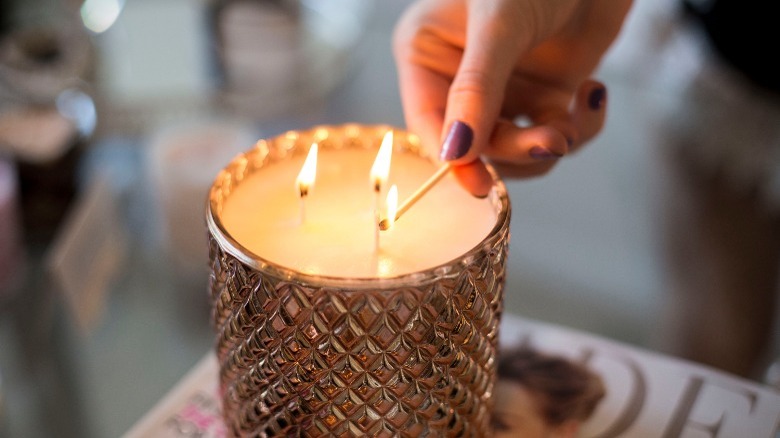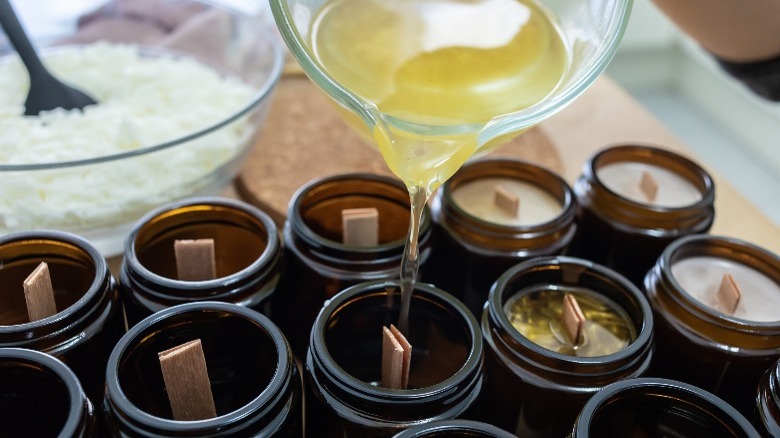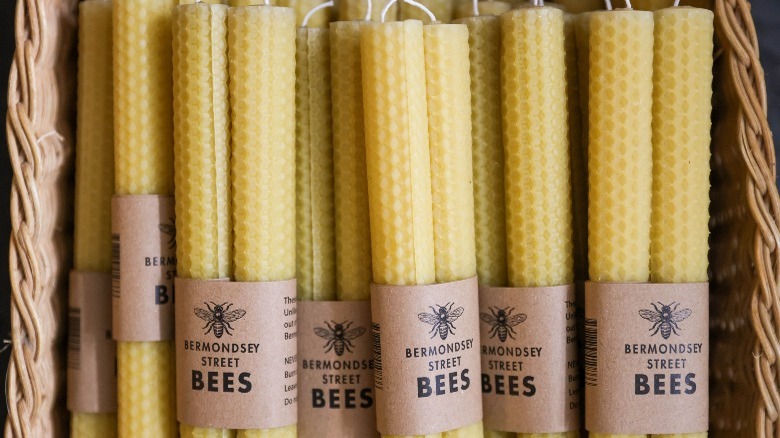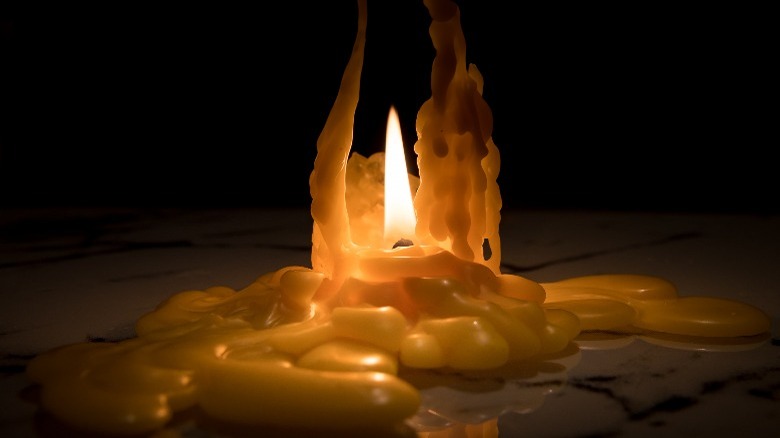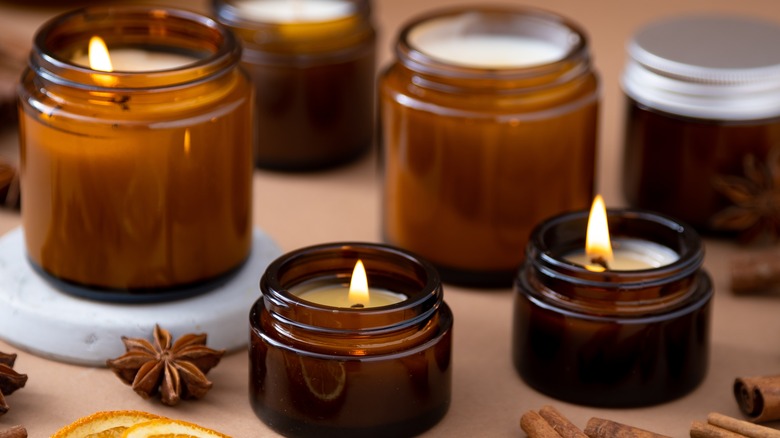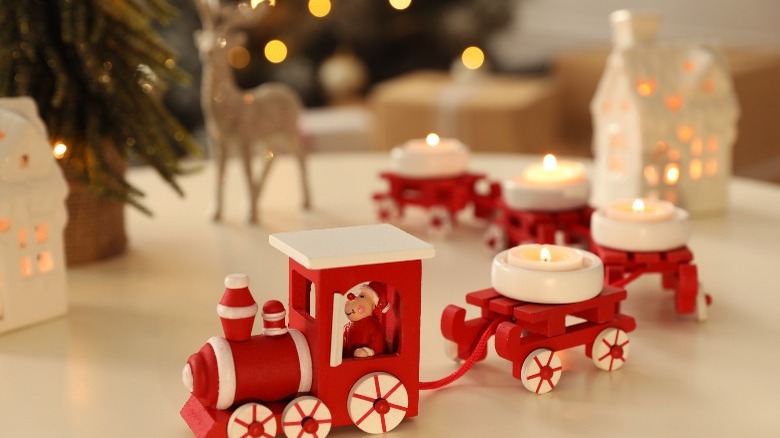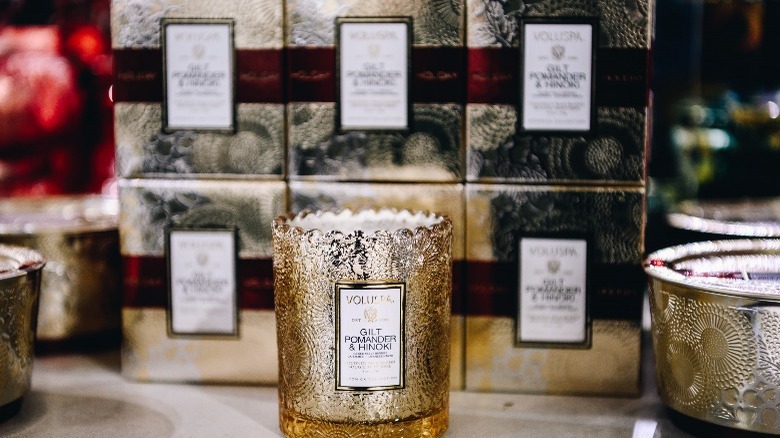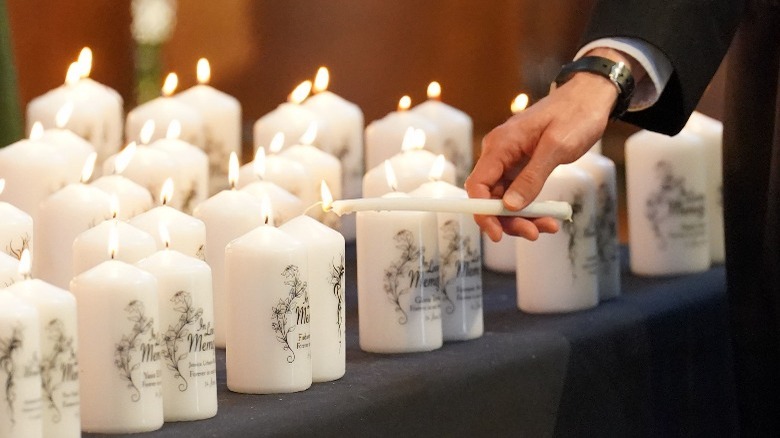Mistakes Everyone Makes When Buying Candles
Candles are a staple in almost every home. We use them for romantic dinners, celebrations, relaxation, holidays, and to create ambiance. According to the National Candle Association, people are increasingly buying candles for home decor, to create a hygge mood, or to add a pretty scent to the space. About 50% of users said they keep their candles in their living room, 18% said they buy them for their kitchens, and 13% keep them in their bedrooms. Candles are all about creating a mood or cinching a theme, and they have become a staple in many people's homes.
Since they are such a common purchase, we thought we should talk about mistakes everyone makes when buying candles. After all, most people don't think twice about what kind of candles to buy, aside from the fragrance. But is it even wise to purchase scented candles? We'll discuss this and much more. If you're one of the millions of people who love candles, keep reading!
Not choosing the correct number of wicks
Candles are made with a varying number of wicks, and even wickless candles are becoming a popular choice. But which is the best kind to buy? According to LAFCO New York, the wick plays a very important part in the burning process and how much actual burn time you get from the candle. While you might be inclined to think it would burn faster with multiple wicks than just one, that assumption would be incorrect. Especially with larger candles, multiple wicks are better than one.
This is due to the inherent way the wick burns the wax. The flame burns wax for its fuel. To keep burning, the flame draws the wax towards it. Sometimes the entire surface area of the candle doesn't get warm enough to melt completely before the wick begins to burn down, which causes tunneling. This drastically reduces the candle's burn time, which means you get less bang for your buck. Multiple wicks help the entire surface of the candle to melt and burn more evenly.
Not checking the ingredients
Something you may not know is the fact that some candles have toxic ingredients. According to Bijou, many candles contain paraffin, specifically known to release 11 different toxins when burned. It's responsible for soot buildup on walls and ceilings, as well. And that's not all. According to Joyous Health, paraffin is made from petroleum and must be chemically bleached and deodorized before being made into wax. The result is a chemical concoction that includes carcinogens.
Typically, scented candles are also made from artificial and, many times, toxic ingredients that release VOCs (volatile organic compounds). Synthetic fragrances and dyes in many candles release these substances, some of which have not been tested for safety on humans. Look for candles with a breakdown of ingredients to check what they contain and avoid any harmful additives. Many candles use clean wax types and natural ingredients that are not toxic or harmful, which we'll be going over.
Not choosing the right type of wax
There are many options for wax these days, per Candle Junkies. One of the most common alternatives to the harmful ingredients in paraffin is soy wax, which is renewable because it's made from soybean oil and comparable to paraffin in price. However, the burn time is less without the stearic acid, and if you're allergic to soy, this option won't work. There's also palm wax, which is a renewable source similar to soy, but is a harder wax that lasts longer. It is also soot and smoke-free. But palm wax candles are more expensive, which could be a hindrance.
There's also beeswax, another natural and sustainable option, but more expensive. Most commonly left in natural colors, this type of candle needs an extra large wick and burns nearly drip-free. Bayberry wax is another all-natural choice, but it's expensive and hard to make. Sometimes, two of these types are blended to create a better-quality wax. Just be sure to choose the right type of wax according to what you plan to use them for and your budget.
Not checking burn time
You should always check the burn time of your candle when purchasing. According to Quick Candles, the size or shape of the candle you get gives you a general idea of how long it's intended to burn. For example, votive candles typically have a burn time of around eight to 10 hours, while tea candles burn the least amount of time, approximately three to five hours. On the other hand, you can usually get 30 to 90 hours of burn time out of pillar candles, while sphere candles are estimated to give 20 hours of light and scent.
No matter what type of candle you're trying to buy, check if there's an estimated burn time listed on the packaging. This is helpful for two reasons. If you're buying candles for a specific event — like a wedding or holiday party — you want to ensure your candlesticks or votives don't gutter out before the night is over. If you know your event will last eight hours, you shouldn't choose a votive with six hours of burn time. And secondly, if you check the candle's burn time, you can compare and contrast similar options and choose the one that will last the longest. The wax type you choose will influence the burn time, as well as the type and number of wicks. If you're deciding between two candles at a similar price point, double-checking their burn time will help you buy the better deal.
Choosing the wrong type of wick
There are multiple types of wicks made from different materials, per Well+Good. This matters because a poor-quality wick can cause soot, sparks, sputtering, tunneling, and uneven burning. Some candle wicks contain lead, though it has not been widely used since 1974. Candle wicks are typically made from cotton, metal, or a blend of materials, but it's important to know what your particular candles use. Otherwise, the wick can contribute to higher indoor air pollution and irregular burning levels.
According to the National Candle Association, some common candle wicks are flat, square, cored, or wooden. The better quality wicks are knitted or braided, as opposed to being just twisted, for a slower, more even burn. Twisted wicks are good for birthday candles, but not much else. Flat wicks are the most common, usually plaited from three strands of fibers, and don't need trimming. They're usually very consistent in their burn time, making them a safe purchase.
Square wicks are even better than flat wicks. They are usually knitted or braided, and create less tunneling than flat wicks, providing more stability. Cored wicks have a core made from cotton, paper, tin, or zinc to help the wick remain stiff when burning. These are pretty much mandatory in votive or jar candles since they ensure the wick doesn't curl down and get dipped into the pool of melting wax. If you're buying a big or chunky candle, make sure it has a cored wick. Wooden wicks are trendy due to their visual and auditory effects — they create a cozy crackle and often give off a woodsy scent. They're a little harder to maintain since they're harder to trim, but they can make the space feel cozier. They're not mandatory, though. Only get them for the experience.
Not buying the proper candle holders
The type of candle holder you use for pillar or tapered candles is important for fire safety, per Stone Candles. These candles must snuggly fit the candle holder, or else they might topple over and create wax stains or start a fire. You also want to ensure they're made from a heat-resistant material. A plastic candle holder can melt and create harmful gases or damage the table it's on, and non-heat-resistant glass can crack or even explode. Cheap candles may be housed in flammable containers, so it's important to choose wisely.
As for protecting your furniture, you can purchase candle holders designed to catch wax, helping you catch drips from melting candles. This will protect your tabletops and tablecloths. If you're using chunky votive candles, make sure you have a decorative glass tray under them so they don't leave rings or pooling wax on your table.
Buying artificially scented candles
The problem with scented candles is how they're created. Artificially scented candles pose the highest risk due to the fact that manufacturers don't have to disclose the ingredients (chemicals) used to create them. And each scent can require 100 or more chemicals in its formula! Obviously, this can be cause for concern, especially for pregnant people and small children.
Synthetic musks and phthalates, the chemicals that bind the fragrance with the wax, are particularly concerning. These are considered carcinogenic and harmful to our health. Consider buying only naturally scented candles instead, either with only pure essential oils or natural scented waxes. These candles may be a little more expensive, but if you frequently burn candles, they are definitely worth it. Artificial fragrances can make up to 80% of the candle's composition, so choose wisely. No matter how delicious the smell may be, if it's artificial, it can emit harmful chemicals.
Buying candles one by one instead of in bulk
If you're buying candles one at a time, you're probably wasting a lot of money. Especially if you use them quite often or if you need them for a special event. For example, stores like Pottery Barn, World Market, and Michaels sell single, tapered candles anywhere from $2 to $4 a candlestick. But you can buy these in bulk for half the cost. In Michaels' case, a 10-inch taper candle by Ashland is $1.99, but a 15-pack of the same candles is $11.99, averaging 79 cents a candle. The same goes for pillar candles. The more you buy in bulk together, the more affordable they will be.
This is especially helpful if you burn candles consistently for ambiance or scent — you will end up spending less money in the long run. Try Ikea if you're looking for an especially affordable place to buy bulk candles. It has a 20-pack of votive candles for $8.99 and five block candles for $10.99.
